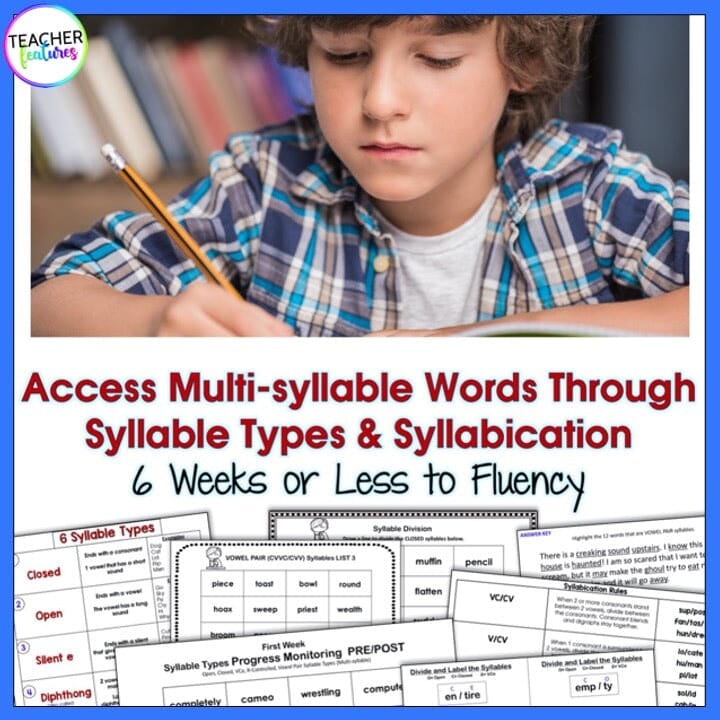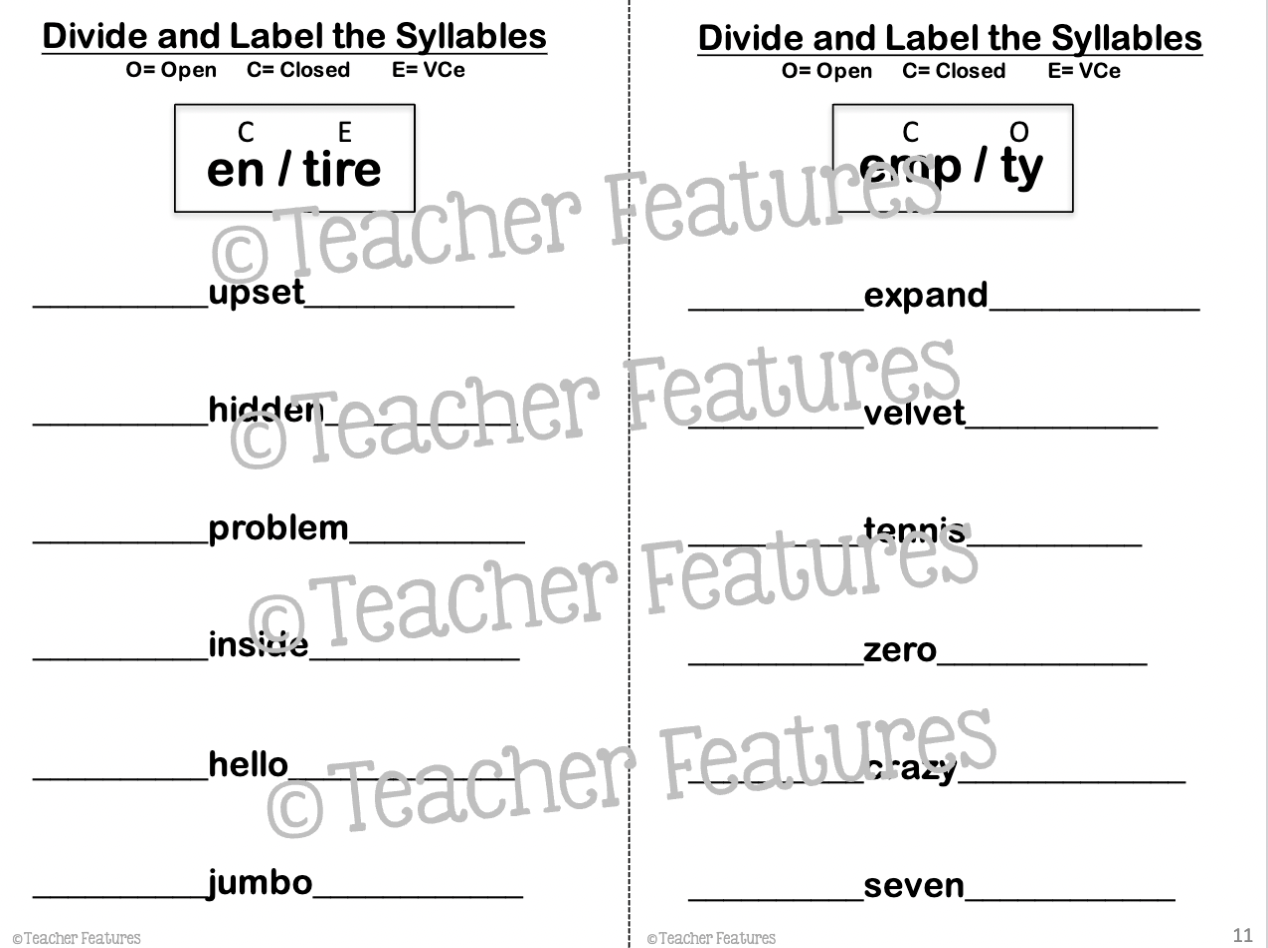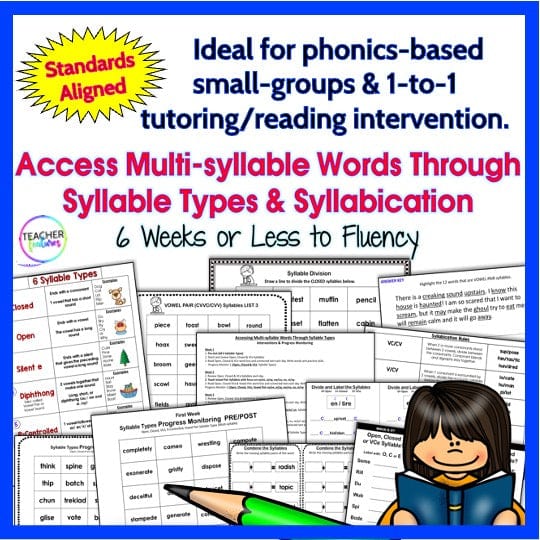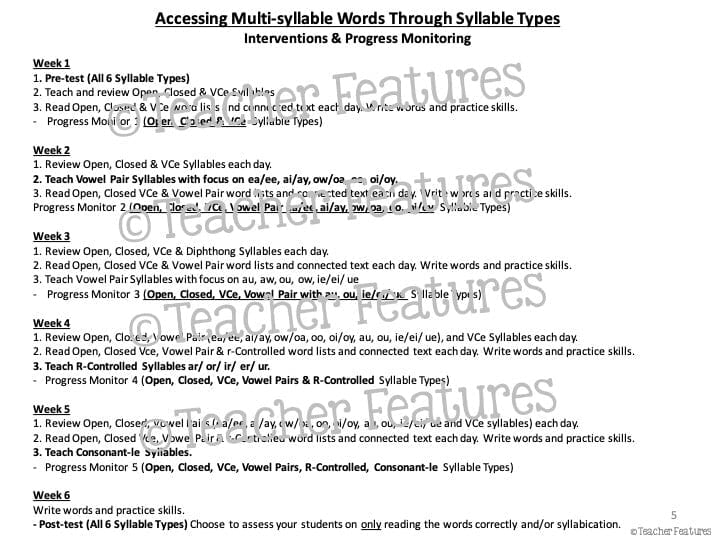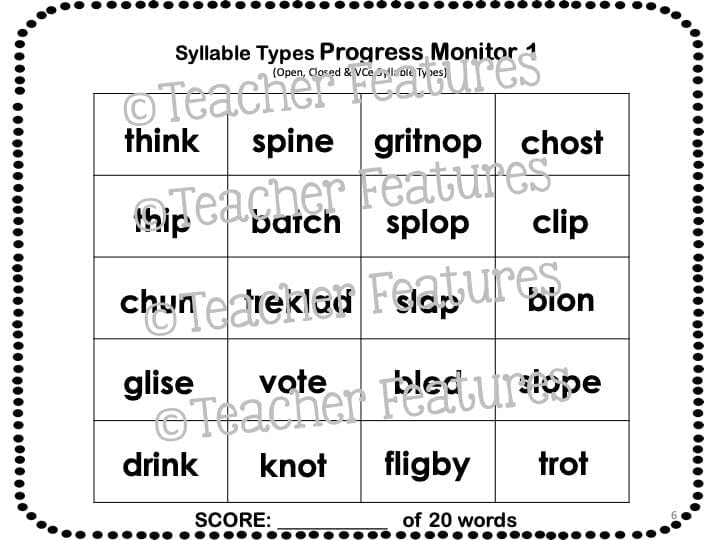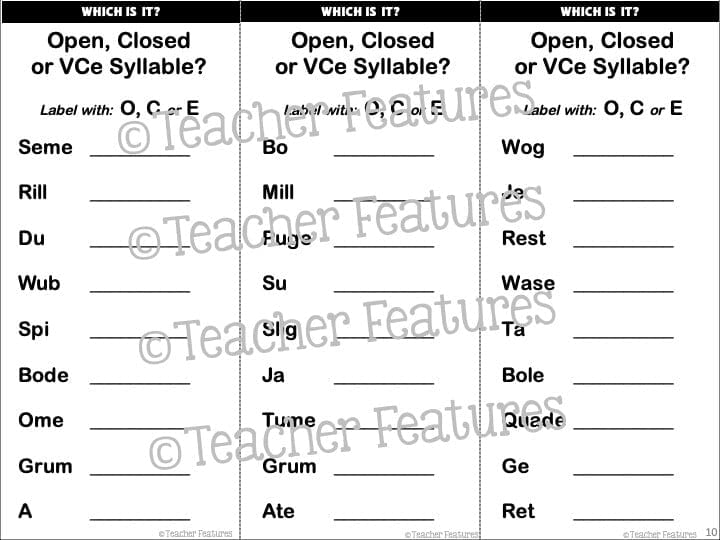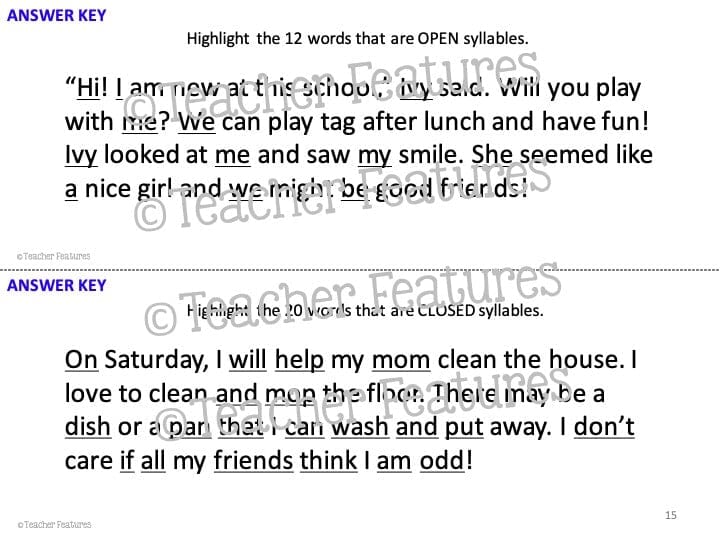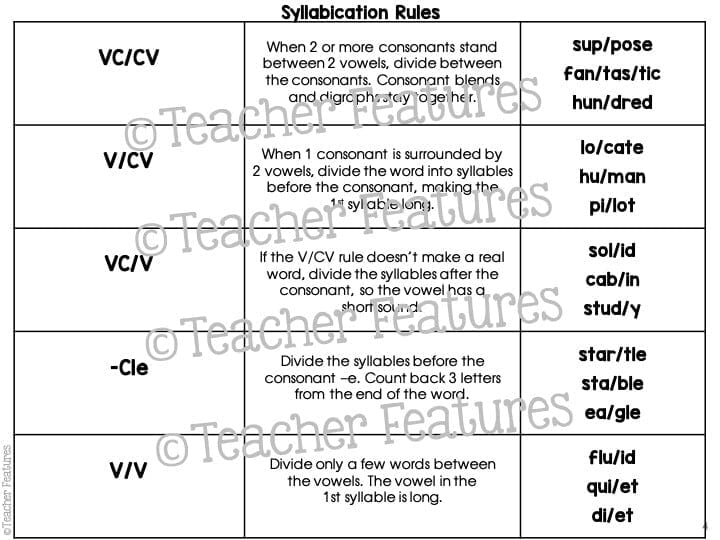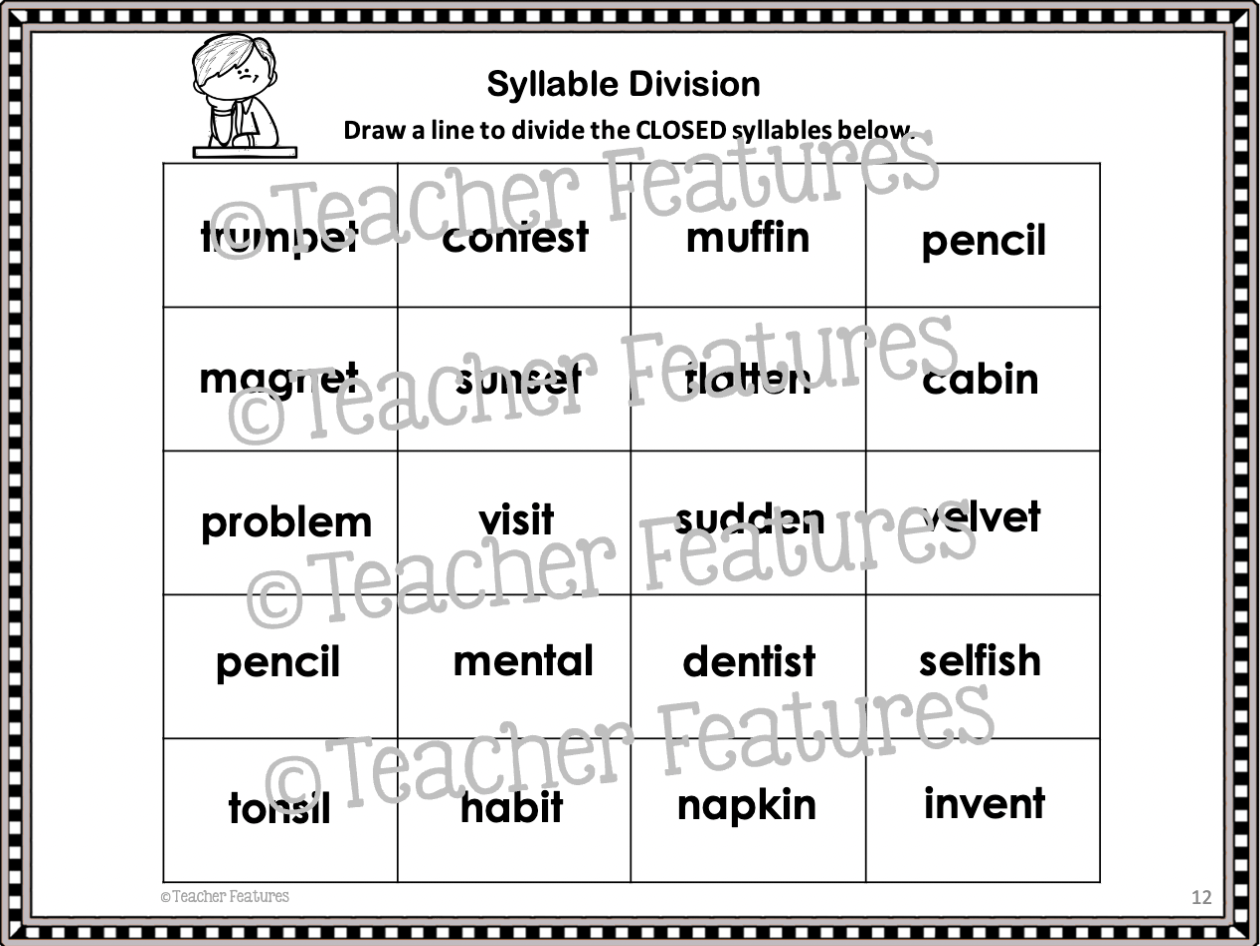Teacher Features
Decoding MULTISYLLABIC WORDS 6 Syllable Types SYLLABLE DIVISION Aligned to SoR
Decoding MULTISYLLABIC WORDS 6 Syllable Types SYLLABLE DIVISION Aligned to SoR
Couldn't load pickup availability
Teach 6 syllable types & syllabication in 6 weeks or less. Science of Reading & Orton Gillingham aligned, students practice decoding multisyllabic words using syllable rules & 3 syllable word division, building word fluency & vocabulary that strengthens reading comprehension. The initial pre-test includes 2 and 3 syllable words that are challenging for most students in 2nd, 3rd & 4th grade. Comprehensive & printable. Research shows explicit teaching and mastery of each syllable type directly impacts a student’s ability to decode lengthy words.
>> Ideal for phonics-based small-groups and 1-to-1 tutoring/reading intervention.
Without a strategy for chunking longer words into manageable parts, students may look at a longer word and simply resort to guessing what it — or altogether skipping it. Accessing multi-syllabic words has never been easier. This resource is suitable for use with Orton Gillingham instruction and other reading interventions. Everything you need to teach students the 6 different Syllable Types and Syllabication skills in 6 weeks or less.
*** The syllable-teaching order is highly recommended, however, some programs may suggest a slightly different order. Professional judgement is recommended for teaching your students- YOU know your students best! :)
The goal is for students to have strategies to correctly read more complicated multisyllabic words. Understanding syllabication skills helps students unlock the key to vowel pronunciation and chunking long words. (74 pages)
Includes:
(3) Syllable Types Guide Posters
“Five Syllabication Rules” Poster
(1) 6-Week Lesson Plan (or teach it however you want… merely a suggestion)
(3) Pre & Post Progress Monitoring Sheets for the 6 Syllable Types (one Last Week recording sheet includes syllable division answers
(5) Progress Monitoring Sheets 1 – 5
(3) Open Syllable Word Lists (three lists containing nonsense & real words)
(3) Closed Syllable Word Lists (three lists containing nonsense & real words)
(3) Silent-E Syllable Word Lists (three lists containing nonsense & real words)
(3) Vowel Pair Syllable Word Lists (three lists containing nonsense & real words. Week 1 list does not contain au, ou, ie/ei/ ue )
(3) R-Controlled Syllable Word Lists (three lists containing real words)
(3) Consonant-le Syllable Word Lists (three lists containing real words)
(4) “Which Is It?” Sheets (12 practice activities in all)
(3) “Divide and Label the Syllables” Sheets (6 practice activities in all)
(6) “Connected Text” Syllable Sheets (each passage focuses on a syllable type- answer keys included)
CCSS ELA Standards:
©Teacher Features
WHAT TEACHERS ARE SAYING...
Share
